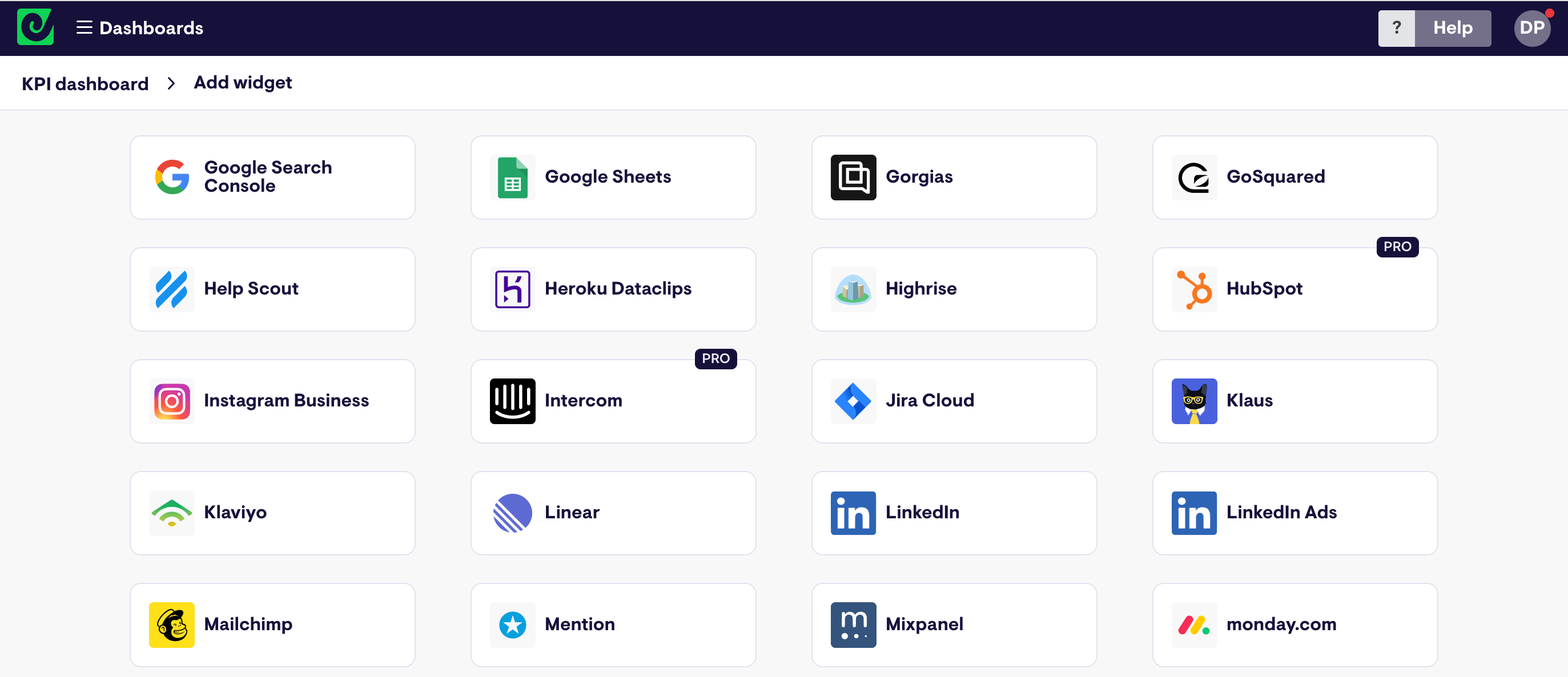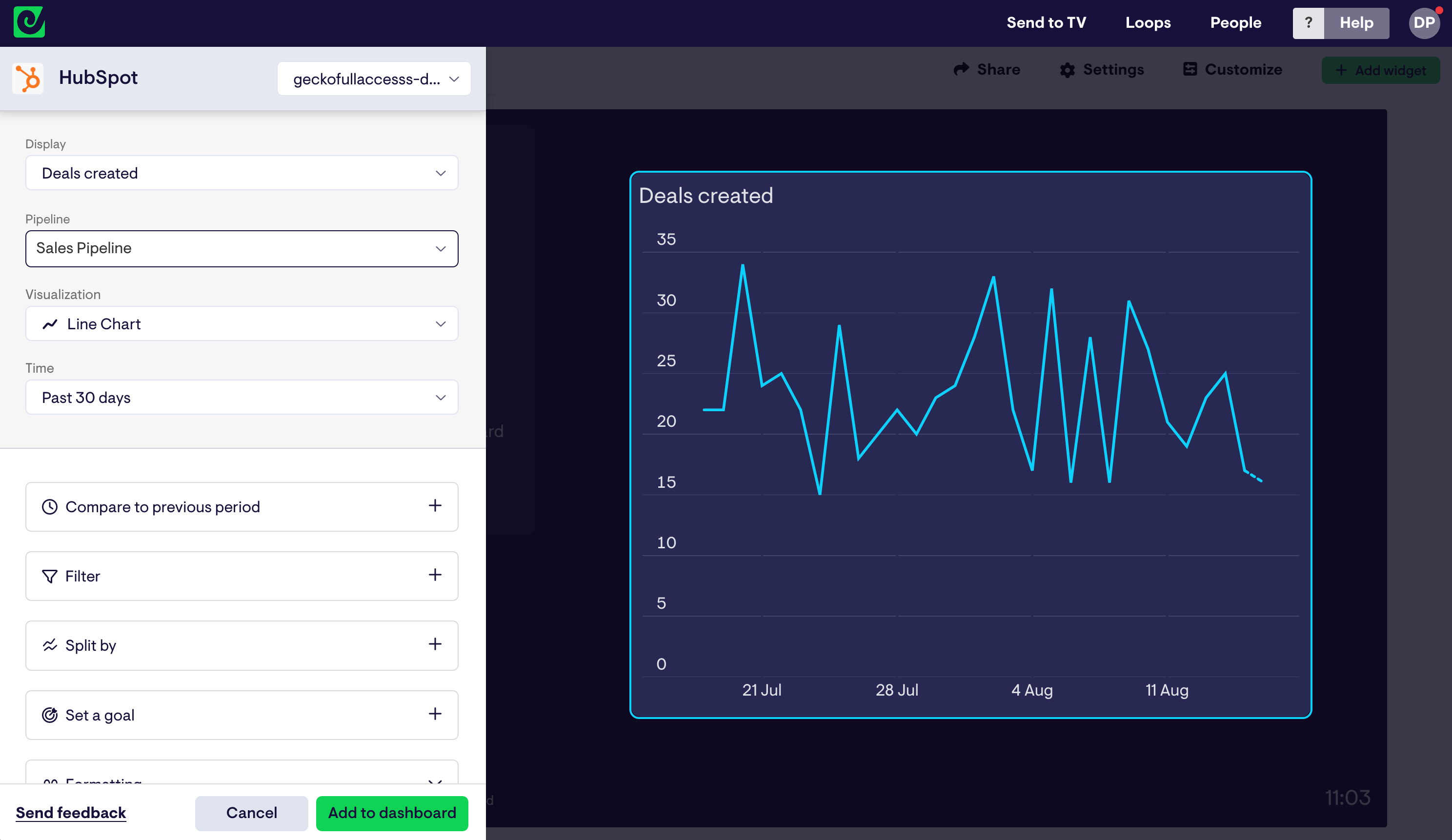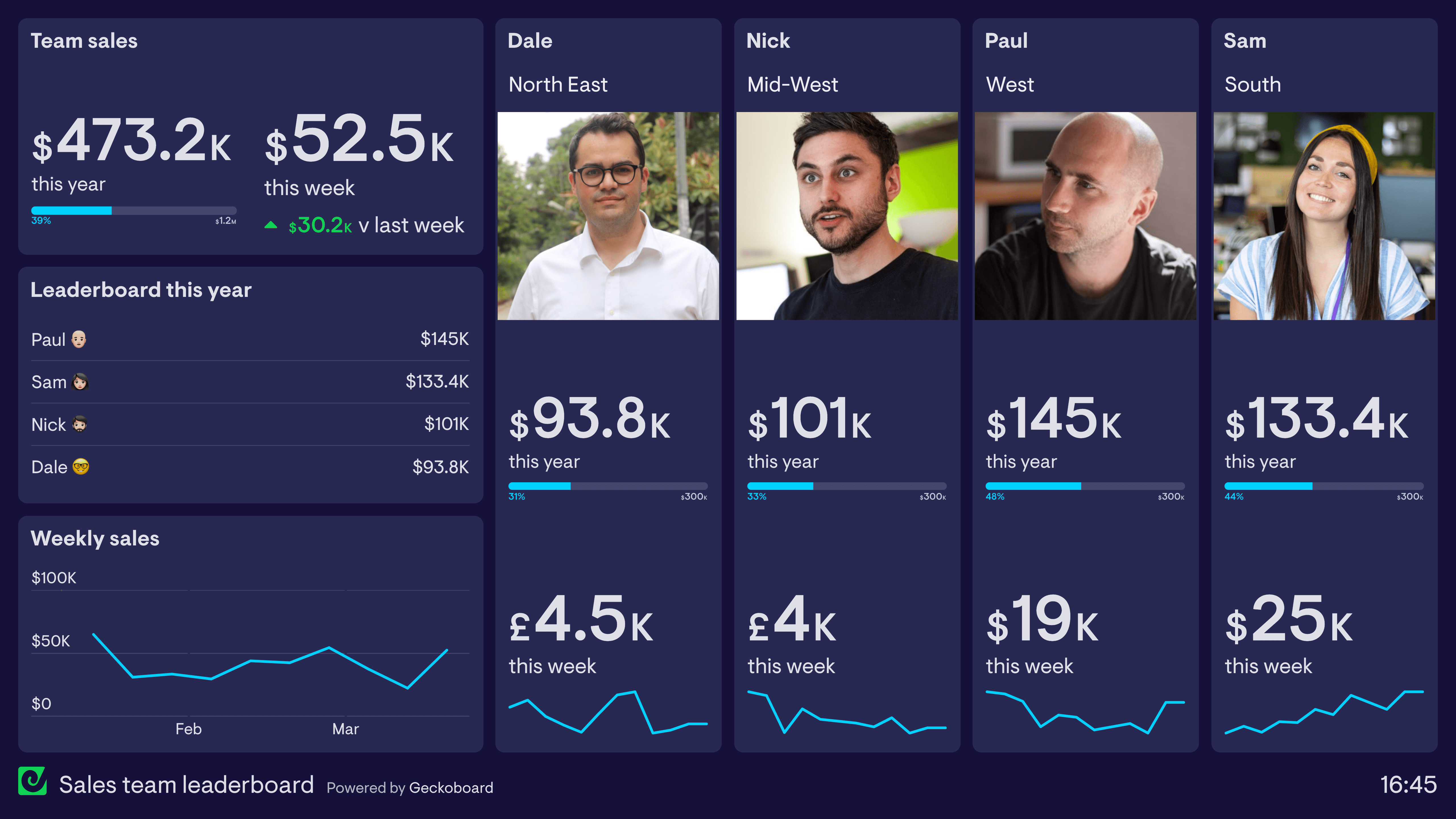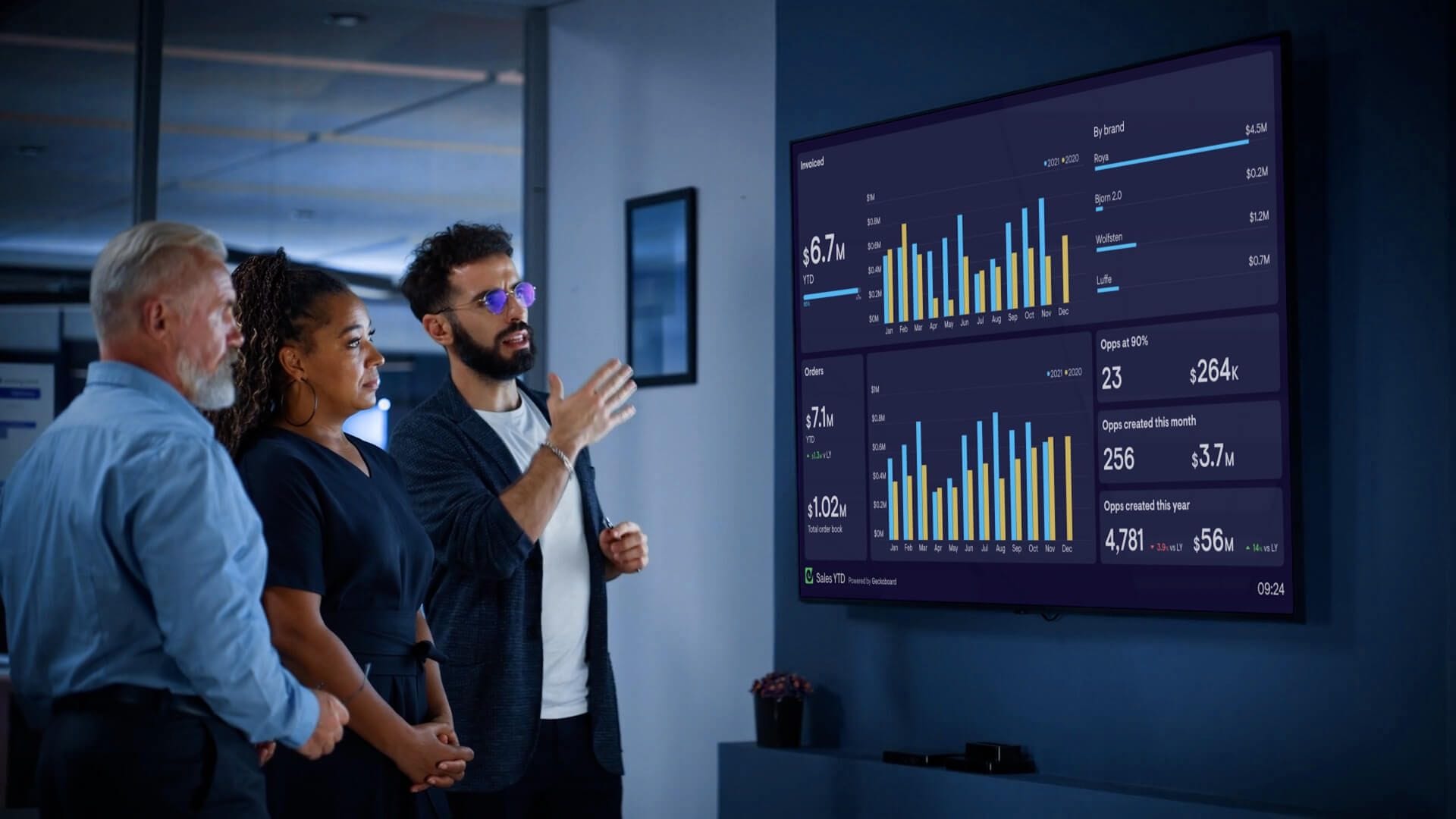HubSpot is one of the most popular CRM tools on the planet – especially for small and medium-sized businesses who are trying to scale.
One of the benefits of HubSpot is the amount of useful sales data it generates. So, it may have occurred to you that if you can make this data more visible or accessible, it will keep your team focused and motivated.
A TV dashboard or wallboard can have a powerful effect on a sales team. By displaying your key sales metrics in a prominent space, your team will become more aware of their KPIs, and more responsive to important changes.
In this article, we’ll walk you through, step-by-step, how to set up a TV dashboard for HubSpot Sales.
Benefits of a TV dashboard for HubSpot
A TV dashboard can have many benefits for a sales team:
- Important changes (such as Deals Created, Win Rate, or changes to the pipeline) are spotted quickly, so you can take early action.
- Sales reps become more familiar with KPIs, including how their numbers change over time.
- Goals and targets become an important part of your team's culture.
- Other parts in your company (including the management team) have better access to performance metrics, without needing to use the Hubspot platform.
Why can’t you directly display HubSpot on a TV?
In this article, we’ll show you how to use Geckoboard to create a custom dashboard that can be displayed on a TV. However, you may ask yourself: wouldn’t it be easier to just connect a TV to a browser, where I can already view HubSpot reports?
It’s a good question, but there are several reasons why it’s not practical to display HubSpot reports on a TV:
- HubSpot isn’t visually optimized for TV display. For example, in order to access all the data, you would need to click and scroll.
- It wouldn’t necessarily display live data, not without manually refreshing your reports.
- You can’t display HubSpot data alongside metrics from other sources such as Google Sheets, Aircall, Shopify or Zendesk.
Building a TV dashboard for HubSpot sales
To display HubSpot data on a TV, you will need to use a third-party dashboard tool.
It’s important to ensure your dashboard software is optimized for TV display, meaning it can be displayed in full screen, does not require interaction, can be understood at a distance, can be displayed indefinitely, and can be updated remotely.
Fortunately, Geckoboard is designed to meet all of these requirements.
Step 1: Signup to Geckoboard
Sign up for a 14-day free trial, (you don’t need to enter any credit card details).
Step 2: Connect your HubSpot account
To start, click ‘add widget’ then select HubSpot.

Choose any of the widgets to get started, then log in to HubSpot to create your connection to Geckoboard.
Step 3: Add a widget to your dashboard
Once you’ve established a connection to your HubSpot account, you can start creating visualizations, which we call ‘widgets’ – these include numbers, bar charts, line charts, and leaderboards. That means you can display anything from deals, revenue, or leaderboards that show team performance.

You can give further context to widgets by including goals, comparisons, and status indicators. This helps the people looking at your dashboard to understand the significance of the metrics being they’re seeing – so they know if they are good, bad, typical, or unusual.
Step 4: Build up your dashboard by adding more widgets
Once you’ve built your first widget, you can easily build up a dashboard that shows your sales team’s most important data and KPIs.

You can drag, group or resize widgets how you want them. We recommend that you put your most important metrics in the top left hand corner so they are the first thing your audience sees.
Your aim is that your dashboard is easy to read and understand, at a glance.
Step 5: Choose the right hardware
In order to display your Pipedrive dashboard on a TV, you will need:
- A TV screen – any HD TV should work. You can also use a computer monitor but these are normally smaller and more expensive.
- A small computer (one that can run a modern browser like Firefox or Chrome). Smaller is often better because it can be stored discreetly behind the TV. We recommend a PC stick or Raspberry Pi, which are generally inexpensive.
- A HDMI lead or similar connection.
We’ve put together a guide to help you choose the right TV dashboard hardware here. This includes why we don’t recommend using a Smart TV, Amazon Firestick or casting device to power your TV dashboard.
Step 6: Setting up your hardware
Once you have your hardware, it’s time to set it up.
Position your TVThink about who needs to view the dashboard and how easy it will be for them to see it from where they work.
Kiosk modeWe’d recommend you set up your computer device in kiosk mode. Kiosk mode configures the device so that it runs a single application when it’s turned on, effectively meaning it will always open on your dashboard, every time the device is booted up.
We’ve created some step by step guides to setting up Windows devices and Raspberry Pi in Kiosk mode.
Step 7: Connect your dashboard to your TV
Using a different computer, log in to Geckoboard, select ‘Send to TV’ and follow the instructions.
Here you can manage your TV connections, connect a screen using a short URL and passcode, and even choose several dashboards to be displayed on a loop.
We hope you found this guide useful. Click here to start your free trial with Geckoboard and create dashboards for Pipedrive and over 90 other different data sources.

